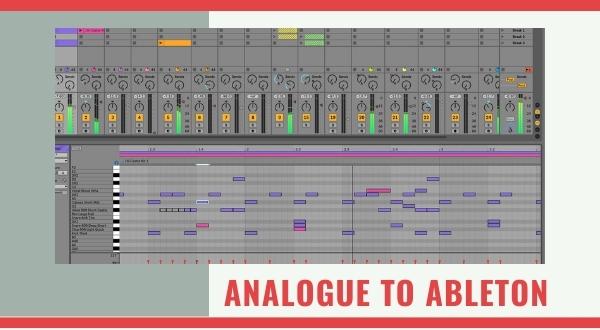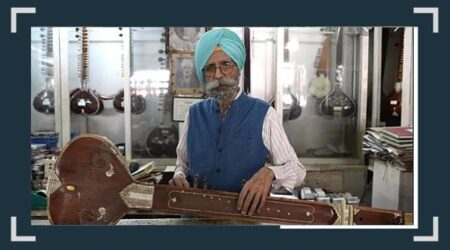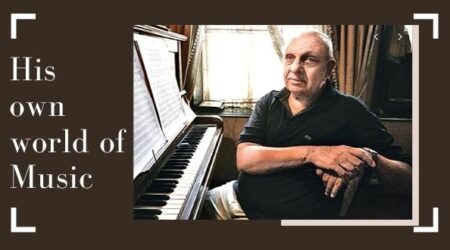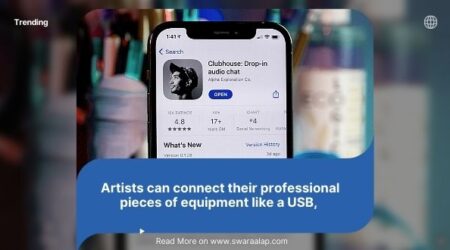Analogue to Ableton
Musical innovation has paved the way for future musicians to explore and use their talent to the utmost. Here are a few notable innovations in the past years.
1935-1960: AEG Magnetophonon Tape Recorder
The first everyday use tape recorder. The Magnetophonon was designed with Pfleumer’s magnetic tape in mind and premiered at the Berlin International Radio Exhibition. As with most original iterations of these devices, Magnetophon’s first recordings were distorted and nearly inscrutable. But by 1939, tape manufacturers began using a different kind of oxide that provided extra clarity and helped cement Magnetophonon as a pioneering piece of aural history.
 1940: The Vocoder
1940: The Vocoder
Before Auto-Tune, the Vocoder reigned as our primary tool for manipulating and messing with a singer’s pitch (i.e. a vocal synthesizer). Created by a Bell Labs physicist to secure compressed voice transmissions over phone lines, it became essential during WWII in obscuring trans-Atlantic conversations between President Roosevelt and Winston Churchill. Three-plus decades later, ground-breaking German electronic band Kraftwerk made it commonplace in popular music, where it would later be notably adopted by the unlikely one-two punch of Cher and Daft Punk.
1960-1980: JTM45 Amplifier (1962)
When Jim Marshall and his colleagues Ken Bran and Dudley Craven began constructing their now-signature amp, they had bass playback in mind, which might explain why the JTM produced such booming results. It also didn’t hurt that they upped the ante on Fender models with bigger, closed-back cabinets and impactful Celestion speakers that allowed for the robust sound that Pete Townshend, Eric Clapton and legions of other axe-wielders would come to prefer. Big Jim passed away in 2012 at 88, but his 45 is immortal.
1979: The Walkman
Sony’s Walkman, which arrived in 1979 as a convenient, fashionable way to make an already portable innovation even more portable. The Walkman represented a true synergy of music tech, for it wouldn’t have been possible without Phillips’ cassette tape or Nathaniel Baldwin’s headphones. Also, Sony exec and music fan Masaru Ibuka traveled a lot and wanted something more compact than a typical cassette recorder to play back albums. Enter the Walkman (or, as it was first dubbed in America, the Sound-About), and thus commenced an era of casually neglecting passersby on streets, buses and in airplanes. Amen.
 1980-1990: Compact disc, CD
1980-1990: Compact disc, CD
Since its commercial introduction in 1982, the audio CD has almost completely replaced the phonograph disc (or record) for high-fidelity recorded music. Co-invented by Philips Electronics NV and Sony Corporation in 1980, the compact disc has expanded beyond audio recordings into other storage-and-distribution uses, notably for (CD roms) and entertainment systems (DVD).
1988: Akai S1000-
The Akai S1000 is a professional stereo digital sampler, released by Akai in 1988. The S1000 was among the first professional-quality 16-bit stereo samplers.
Boards of Canada’s Michael Sandison said “We have five or six samplers, but my favorite by far is still the Akai S1000. It’s an old tank now, and the screen has faded so that I almost can’t read it, but I know it inside out. It’s the most spontaneous thing for making up little tunes.”
1990-2000: MP3(1995)
Tomislav Uzelac invented the first successful MP3 player.
MP3 is a digital music format for creating high-quality sound files. It has transformed the way people buy and listen to music. The great attraction of the MP3 format is its ability to compress files, making it a convenient, versatile and very popular way of storing music.
1997: Autotune-
An audio processor introduced in 1997 which uses a proprietary device to measure and alter pitch in vocal and instrumental music recording and performances. It was originally intended to disguise or correct off-key inaccuracies, allowing vocal tracks to be perfectly tuned despite originally being slightly off-pitch.
Nearly all singers use some auto tune and pitch-shifting for recording. It’s efficient, saves money, and saves the singer’s voice from vocal fatigue.
2000-2010: iPod (2001)-
One of the most successful products Apple has ever made was the iPod. It was first released in 2001. But now it is 2020 and despite having Apple Music on our iPhones and even being available on Android and some smart TV’s, Apple still sells the iPod Touch.
2007: Sound cloud-
Enterprising Swedes Alex Ljung and Eric Wahlforss launched Soundcloud from a Berlin office in Fall 2007. At the time, their aspiration was for artists and others in the music industry to have a simpler platform than MySpace for sharing songs with one another.
Four year later, SoundCloud was streaming music to and between 200-millon-plus sets of ears worldwide.
2010-2020: Roli Seaboard (2013)-
Lasting only 15 seconds, La La Land introduced Roli Seaboard to the world. What is that thin black thing Ryan Gosling is playing on? asked internet users. Launched in 2013 the seaboard evolved from the piano keyboard, it is a new musical instrument which bridges the gap between acoustic and digital music by putting the control of pitch, volume and timbre right at your fingertips.
2019: Abelton Live-
Abelton Live is one of the biggest players in the DAW scene for good reason. Its inspiring workflow and intuitive “session view” have made it a favourite among electronic producers. Ableton’s built-in sampling and synthesis plugins are extremely high-quality sound-design tools.














Leave a Reply